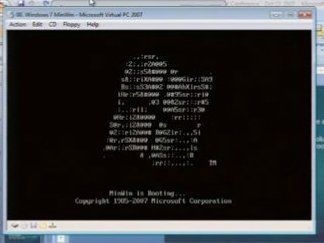Next-gen Windows install takes up just 33 MB
Proof-of-concept demo could underly Windows 7, due in 2010

Microsoft has demonstrated a new cut-down version of the Windows kernel that could change the way future versions of the operating system are developed.
The reason? What has been dubbed "Windows MinWin" takes up just 33MB of system memory. Currently it can only run within a host operating system, but the demo occurred during a speech segment on the post-Vista version of Windows, Windows 7.
Vista = bloatware?
The kernel is the core code that underlies the operating system, providing a basis for functions such as Windows services to run on top of.
Microsoft engineer Eric Traut was giving the lecture at the University of Illinois and certainly provided a swift left hook to those who believe that Windows is bloatware to the core. Traut said the development would help Microsoft "move into a lot of new areas".
MinWin doesn't have a graphical interface and was designed to show that a lot of the girth associated with Windows isn't actually necessary for a system to run. "The components that make up the very core of the operating system, [are] actually pretty streamlined," he said.
Windows could be even smaller
Windows Vista currently takes several gigabytes of install space, depending on the version of the OS that you have installed.
Traut added that the demo installation wasn't even as small as he'd have liked it to be. Variants the demonstration code have already been used in various Microsoft applications.
Sign up for breaking news, reviews, opinion, top tech deals, and more.
The video of the event has been posted online. Windows 7 will be launched in 2010, according to current Microsoft estimates.
Dan (Twitter, Google+) is TechRadar's Former Deputy Editor and is now in charge at our sister site T3.com. Covering all things computing, internet and mobile he's a seasoned regular at major tech shows such as CES, IFA and Mobile World Congress. Dan has also been a tech expert for many outlets including BBC Radio 4, 5Live and the World Service, The Sun and ITV News.